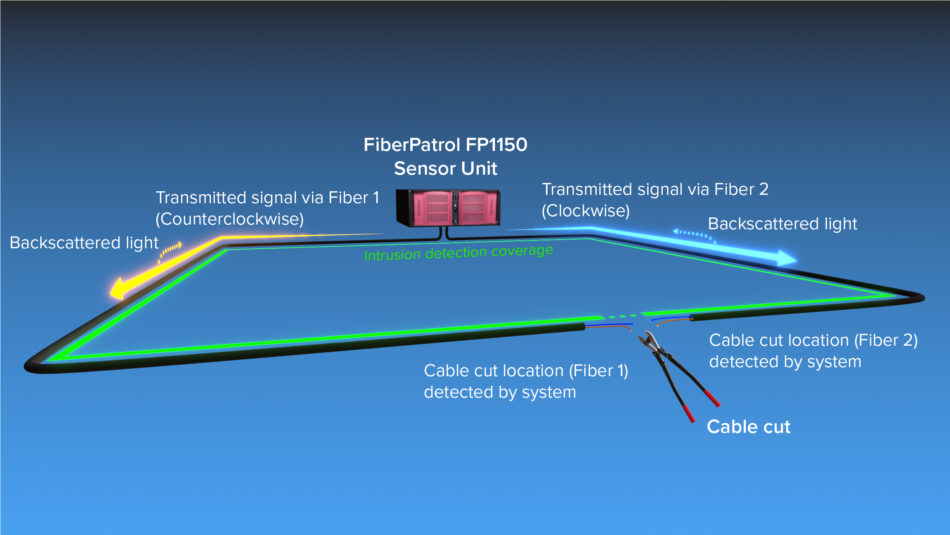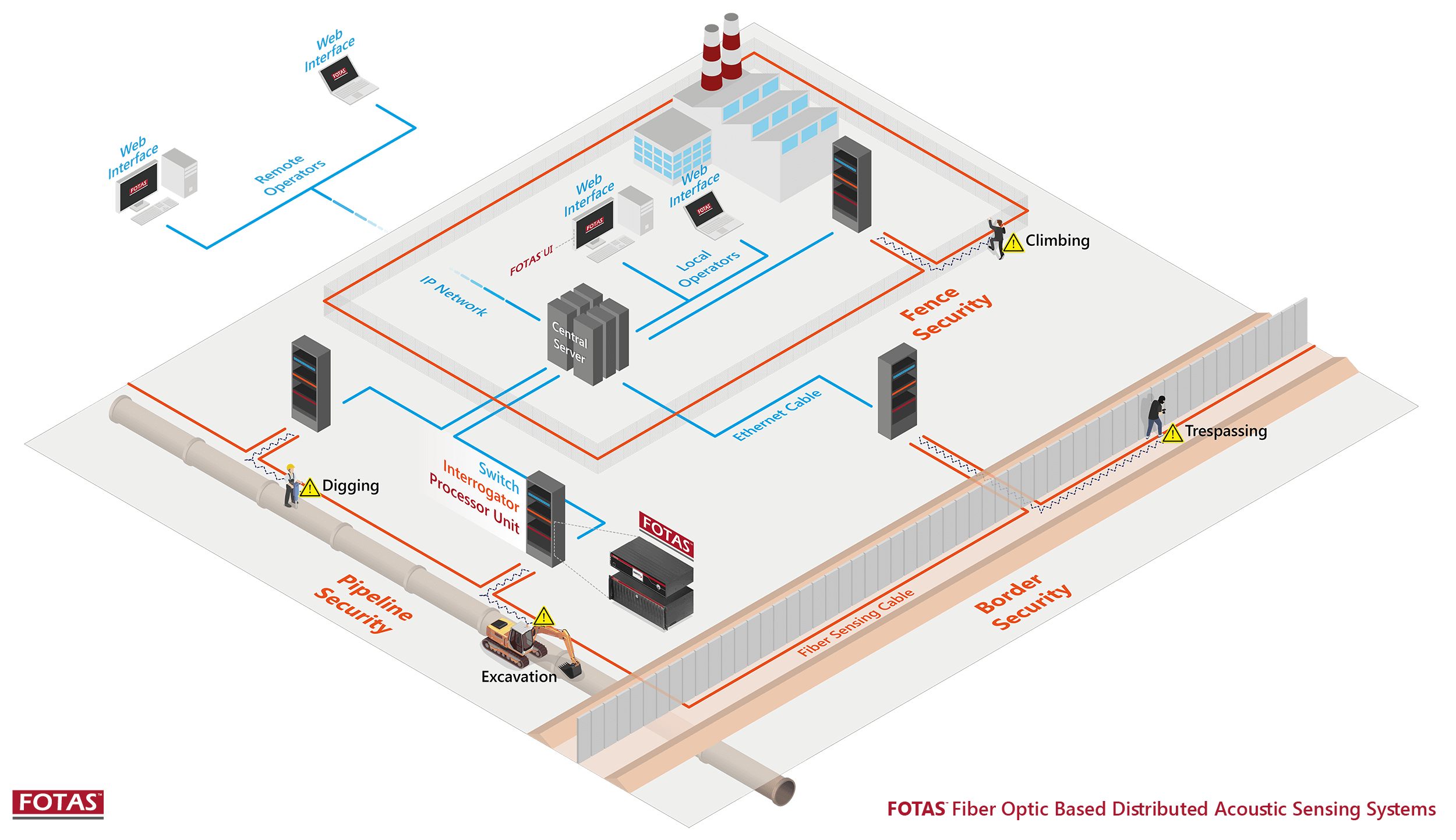Why Fiber Optic Safety And Security Equipments Are the Future of Security
The shift to fiber optic protection systems notes a substantial advancement in the realm of defense, driven by their remarkable data transmission capabilities and resilience to outside interferences. As the landscape of security evolves alongside emerging innovations such as AI and IoT, the potential for fiber optics to improve and redefine safety frameworks ends up being significantly noticeable.
Benefits of Fiber Optic Systems
One of the main benefits of fiber optic systems is their premium data transfer ability, which helps with the transmission of large volumes of information over cross countries without substantial loss. This characteristic is particularly useful for security applications that call for the continuous surveillance and transfer of high-definition video feeds, sensing unit information, and various other critical info. Fiber optics can accommodate the expanding demands of modern-day safety systems, ensuring that information remains intact and reputable.
Furthermore, fiber optic cords are less prone to electro-magnetic interference, which can be a substantial issue in atmospheres with different digital tools. This resistance boosts the integrity of the data being transferred, thus minimizing the danger of data violations or system failings. Additionally, fiber optic systems are naturally much more protected than standard copper cables, as tapping into a fiber optic line without detection is extremely hard.
The durability of fiber optic cords additionally adds to their allure. They are resistant to ecological factors such as wetness and temperature level fluctuations, minimizing maintenance expenses and increasing system durability. On the whole, these advantages placement fiber optic systems as a durable and efficient choice for modern-day safety infrastructures, making sure trustworthy and secure information transmission.
Improved Information Transmission Speed

The capability to transmit vast amounts of information promptly helps with the smooth combination of high-def video clip feeds and advanced analytics. Protection systems can currently process and examine details in real-time, enhancing reaction times and situational understanding. Additionally, fiber optic links support longer transmission ranges without degradation of signal high quality, making them optimal for expansive safety networks.
The boosted rate of fiber optic systems not just boosts the efficiency of safety and security operations however also reduces latency. This is particularly essential in crucial scenarios where prompt decision-making can prevent safety violations or mitigate possible threats. As organizations continue to prioritize safety and security and effectiveness, the demand for fast and reliable data transmission will most certainly strengthen fiber optic systems as a keystone of modern safety and security infrastructure.
Resistance to Interference
Fiber optic protection systems continually demonstrate phenomenal resistance find to electro-magnetic interference, a vital benefit in environments prone to electronic sound. Unlike standard copper cables, which can be negatively influenced by electromagnetic areas, radio frequency interference, and various other types of electric disturbance, fiber optic cable televisions utilize light to send information. This intrinsic building makes certain that the signals continue to be clear and unchanged, no matter bordering digital task.
Making use of glass or plastic fibers in fiber optic innovation creates a barrier versus interference, enabling trustworthy data transmission even in difficult situations such as industrial facilities, metropolitan locations with high electronic traffic, or places near radio towers. This characteristic my website substantially minimizes the probability of signal destruction or loss, making fiber optic systems particularly appropriate for security applications where stability and accuracy of data are vital.
In addition, this resistance to disturbance improves the overall efficiency and integrity of safety systems, ensuring that monitoring and alert systems function seamlessly. In a globe where security is progressively endangered by sophisticated modern technologies, the resilience of fiber optic systems sticks out as a crucial feature, reinforcing their status as an important component of modern-day protection facilities.
Cost-Effectiveness With Time
Considerable expense financial savings can be attained over time with the execution of fiber optic protection systems. While the first investment may seem higher compared to traditional copper-based systems, the long-term monetary benefits emerge with minimized operational and maintenance costs (fiber security). Fiber optic cable televisions are naturally a lot more long lasting and much less susceptible to ecological factors, which equates to reduce substitute and repair service expenses over their life expectancy
Additionally, fiber optic systems need much less power to run, which better decreases power expenses. Boosted information transmission capabilities enable for fewer repeaters and amplifiers, lessening equipment financial investment and streamlining installment processes. The scalability of these systems also adds to cost-effectiveness, as companies can why not find out more broaden their security infrastructure without incurring substantial added expenses.
One more element to think about is the raised performance in monitoring and response capabilities that fiber optics offer. Boosted real-time data transmission can cause quicker event action times, possibly mitigating losses and responsibilities connected with security breaches. In sum, the long-lasting advantages of fiber optic safety and security systems not only justify the preliminary expense but additionally position them as an economically prudent choice for organizations looking for durable defense options.

Future Developments in Safety
Advancing modern technologies are readied to transform security systems, incorporating man-made intelligence (AI) and artificial intelligence to boost hazard detection and reaction capacities. These developments will allow protection systems to examine substantial quantities of data in real-time, identifying patterns and anomalies that indicate possible hazards. This positive technique will certainly allow quicker decision-making and much more reliable event feedbacks.
Furthermore, the consolidation of the Net of Points (IoT) is leading the means for interconnected protection gadgets, supplying thorough security and surveillance. Smart sensing units can pass on information regarding environmental adjustments, while automated alerts can inform security workers immediately of questionable activities.
In addition, the development of biometric innovations will additionally strengthen safety mechanisms. Face recognition, finger print scanning, and retina identification are ending up being extra innovative, supplying layers of authentication that are challenging to bypass.
Conclusion
Finally, fiber optic security systems stand for a substantial innovation in defense modern technology, using unequaled data transmission rate, resistance to electro-magnetic interference, and long-term cost-effectiveness. As the need for sophisticated safety and security remedies proceeds to expand, the combination of fiber optics with emerging innovations such as AI, IoT, and biometrics will certainly further enhance safety facilities (fiber security). The combination of these innovations will make sure an extra safe and secure and responsive environment, solidifying fiber optics as a keystone of future safety and security systems